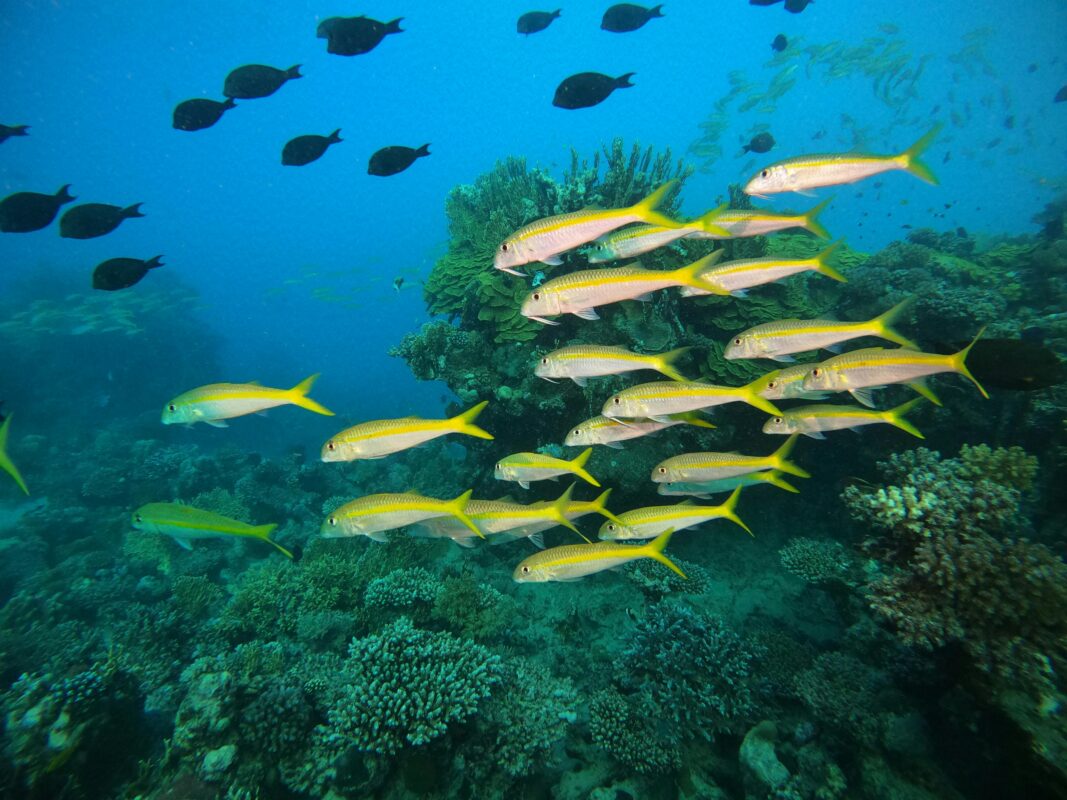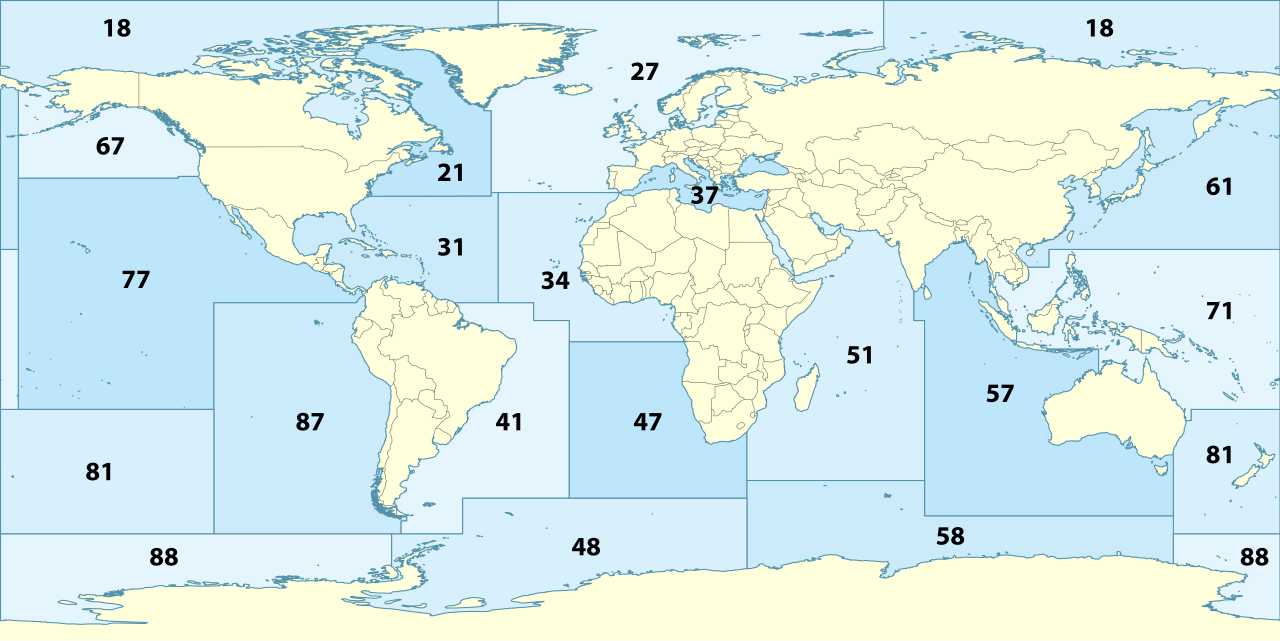In the 1950s, the Food and Agriculture Organization of the United Nations (FAO) began developing a zoning system for the management and monitoring of fishing on a global scale, dividing the maritime world into different areas called FAO Fishing Areas (commonly referred to as FAO Areas or FAO zones). Over the years, this system has been revised and modified to adapt to changes in species distribution, fishing practices, and other relevant factors
There are several key reasons for its establishment:
- Fisheries management: Dividing the world into fishing zones allows countries and international organizations to better coordinate and manage the exploitation of fishery resources. This includes implementing regulations, setting catch quotas, and conserving fish populations.
- Monitoring and tracking: By dividing the ocean into smaller, defined zones, it facilitates the collection of data on fish catch, fishing activity, and the health of marine ecosystems, and thus conducting statistics. This is crucial for understanding and assessing the status of fish populations and making informed decisions about fisheries management.
- International cooperation: Fishing zones also promote cooperation among countries and international organizations in managing shared fishery resources. By clearly delineating areas, agreements and regulations can be established to address common fishing challenges, such as overfishing and conservation of endangered species.
FAO fishing zones are based on geographical, oceanographic, and biological criteria, taking into account the distribution of fish species, ocean currents, seabed characteristics, and other variables relevant to fishing and marine conservation, such as the fishing gear used in each zone, which have different impacts on the marine ecosystem and fish populations.
For example, some fishing gears, such as bottom trawling, can cause significant damage to sensitive marine habitats such as coral reefs and kelp forests, and can catch unwanted or vulnerable species. In some cases, fishing regulations may limit or prohibit certain fishing gears in specific areas to protect fragile ecosystems or endangered species, thus promoting sustainability and long-term maintenance of diversity in the oceans.

At Eurofish Lo&Di, we offer our customers the freshest and most delicious seafood, directly from the waters surrounding our beautiful peninsula, which is why we are pleased to introduce you to the fascinating FAO fishing areas 37, 34, and 27, which embrace our coasts and provide us with a rich diversity of marine species..
FAO 37: The Charm of the Mediterranean
This region is known for its natural beauty and rich marine biodiversity. From the coasts of Spain to the waters of France, Italy, Greece, and beyond, the Mediterranean is home to a wide variety of fish and seafood that are an important part of the Mediterranean diet and local cuisine. Species such as sea bream, sea bass, anchovy, bream, snapper, or grouper cannot be missing from your recipes and your diet.
FAO 34: The Waters of the Central Atlantic
Just south of our coasts, FAO Fishing Area 34 covers the Central Atlantic, from the Strait of Gibraltar, off the west coast of Africa, to the mouth of the Congo River. Here, we find a wide variety of fish, including the exquisite sole and the coveted tuna and albacore, as well as the tasty octopus and squid from Morocco and other seafood such as rock lobster, scarlet prawn, and a large variety of prawns and langoustines.
FAO 27: The Treasure of the North Atlantic
To the north and southwest of the Iberian Peninsula lies FAO Fishing Area 27, the North Atlantic. This area also comprises a vast expanse of waters from various countries in Northern Europe and is home to a great diversity of marine species, supporting important commercial fisheries. These waters are known for their abundance of high-quality fish with good nutritional value, such as cod, sardines, salmon, mackerel, hake, horse mackerel, and whiting; as well as delicious seafood highly appreciated in European cuisine, such as lobster, cockles, razor clams, mussels, clams, crabs, or norway lobsters.
These are just some of the many fish species we market that offer important nutritional benefits. Incorporating a variety of these fish into your diet can contribute to a healthy and balanced diet.

